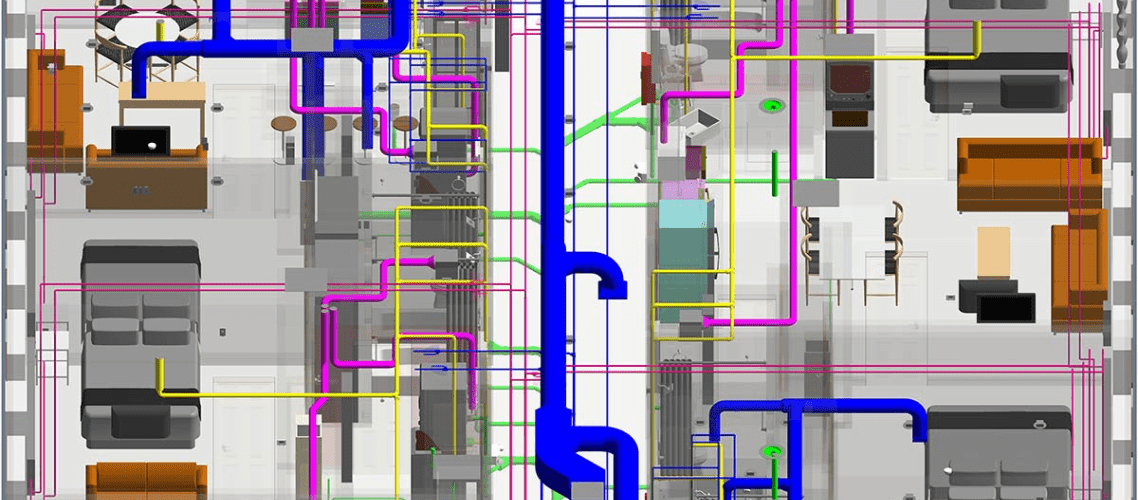The ceiling is the inner surface of the building roof which adds aesthetic to the room. Among various styles of

Multi-family housing presents a unique set of challenges and opportunities when it comes to Mechanical, Electrical, and Plumbing (MEP) design. Achieving optimal systems requires a nuanced approach that considers the diverse needs of residents, efficiency, and sustainability. In this blog, we delve into essential MEP design tips tailored for multi-family housing, exploring the intricacies that lead to superior living environments.
Implementing zoning strategies is fundamental for MEP engineers in multi-family housing. By dividing spaces into zones, each with its HVAC controls, residents can personalize their comfort settings. This not only enhances individual comfort but also contributes to energy efficiency by avoiding unnecessary heating or cooling.
Efficiency is paramount in HVAC design. Opt for energy-efficient systems, such as variable refrigerant flow (VRF) or ductless mini-split systems. These technologies provide precise control, minimizing energy waste and ensuring residents enjoy optimal comfort while keeping utility costs in check.
Reliable plumbing systems are the backbone of any multi-family dwelling. MEP engineers prioritize the design of durable plumbing infrastructure to ensure uninterrupted water supply and efficient waste removal. Attention to quality materials and strategic layout minimizes the risk of disruptions.
Integrating water conservation measures is a key aspect of MEP design. Incorporate fixtures with low-flow technology to reduce water usage without compromising performance. Smart irrigation systems can further enhance water efficiency, contributing to sustainable living in multi-family housing.
Efficient lighting design is critical for multi-family housing. Opt for LED lighting due to its energy efficiency and longevity. Additionally, consider incorporating smart lighting controls, allowing residents to adjust lighting levels based on their preferences while minimizing energy consumption.
Explore the incorporation of renewable energy sources to power MEP systems. Solar panels, for instance, can offset energy consumption and contribute to sustainable living. MEP engineers can strategically integrate these technologies into the design, aligning with the growing demand for eco-friendly solutions.
Promote collaboration between MEP designers, architects, and other stakeholders. An integrated design approach ensures that MEP systems seamlessly align with architectural plans, preventing clashes and optimizing space utilization. This collaborative effort contributes to the overall efficiency and functionality of multi-family buildings.
At InnoDez, we go beyond conventional MEP design, crafting multi-family environments that harmonize with the needs of modern living. Our MEP design tips for multi-family housing stand as a testament to our
commitment to precision, innovation, and sustainability. With a focus on tailoring HVAC systems, optimizing plumbing infrastructure, incorporating energy-efficient electrical solutions, and embracing sustainable practices, we elevate multi-family living experiences.
Elevate your multi-family project to new heights with InnoDez. As a leader in MEP design and engineering, we bring a wealth of experience and a commitment to excellence. Contact us today to embark on a journey where precision meets innovation, and your multi-family housing becomes a beacon of modern living.
About Author
InnoDez